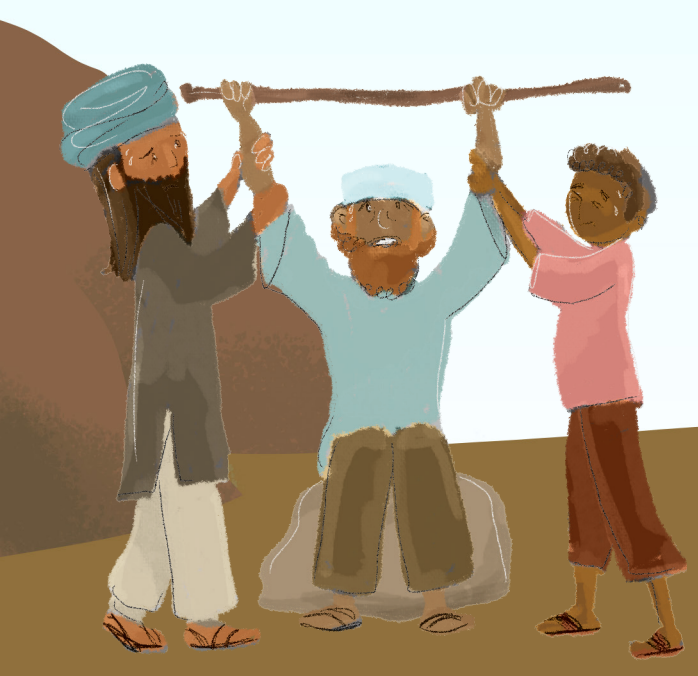Illustration credit: Rivka Tsinman

When Amalek starts a war against Benei Yisrael, Moshe appoints Yehoshua to lead the fighting. Then Moshe climbs to the top of a hill, together with Aharon and Hur. Read what happens up on the hill:
וְהָיָה כַּאֲשֶׁר יָרִים מֹשֶׁה יָדוֹ וְגָבַר יִשְׂרָאֵל
וְכַאֲשֶׁר יָנִיחַ יָדוֹ וְגָבַר עֲמָלֵק׃
וִידֵי מֹשֶׁה כְּבֵדִים
וַיִּקְחוּ אֶבֶן וַיָּשִׂימוּ תַחְתָּיו וַיֵּשֶׁב עָלֶיהָ
וְאַהֲרֹן וְחוּר תָּמְכוּ בְיָדָיו מִזֶּה אֶחָד וּמִזֶּה אֶחָד
וַיְהִי יָדָיו אֱמוּנָה עַד בֹּא הַשָּׁמֶשׁ׃
Whenever Moshe held up his hands, Benei Yisrael would be stronger.
And whenever he would rest his hands, Amalek would be stronger.
Moshe’s hands grew heavy.
So they took a rock and put it under him and he sat on it.
Aaron and Hur, one on each side, supported his hands.
His hands remained steady (emunah) until the sun set.
- What do you notice? What sticks out to you?
- Why do you think Moshe raised his arms at first? What did he expect would happen?
- Were Moshe’s arms performing a miracle? How do you think this worked? (See an explanation in Prayer in the Parashah!)
- Do you notice what they got for Moshe to sit on? That sounds heavy! Why do you think they didn’t just get him a chair? What was important about Aharon and Hur’s role?
- The word that describes Moshe’s arms is אֱמוּנָה (emunah). We translated it as “steady,” but emunah can also mean “faith” or “belief.” How is faith connected to stability? What do you think the Torah is trying to teach us by using this word?

-------------------
-------------------




